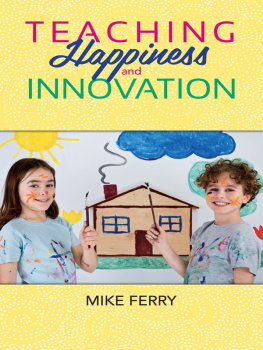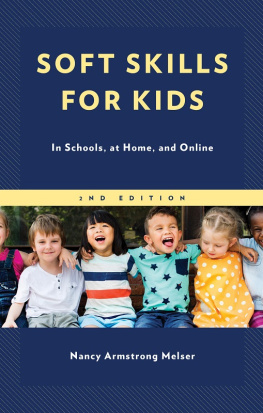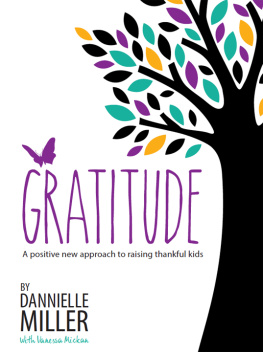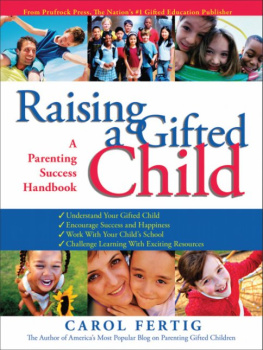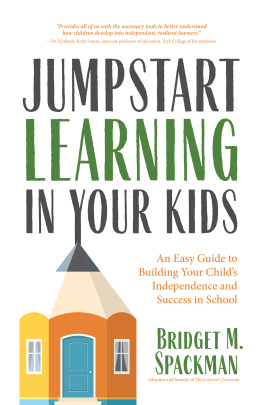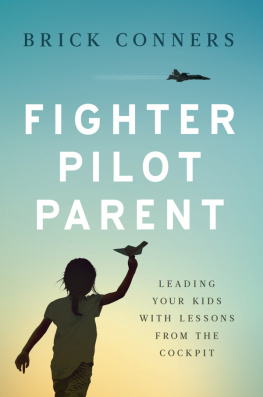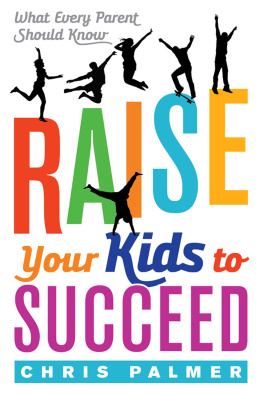
Copyright 2014 by Mike Ferry
All rights reserved.
No part of this publication may be reproduced, stored in a retrieval system, or transmitted in any form or by any means - electronic, mechanical, photo-copy, recording, or any other - except brief quotation in reviews, without the prior permission of the author. Permission may be obtained by contacting the author through www.happinessandinnovation.com .
ISBN: 9781631921568
Thank you to my parents, Pat and Mike, for your steadfast support over the years.
Thank you to my parents-in-law, Becky and Joel, for your helpfulness and care.
Thank you to my wife, Jenny, for your insights, suggestions, friendship, and love.
Thank you to my children, Joseph, Jack, Janey, and James, for being the light.
Thank you to my students, for your optimism, energy, and thirst for knowledge.
Thank you to Stacy Hawkins Adams, for your advice and guidance.
Thank you to George Wickham, for your edits and affirmation.
Thank you to Collegiate School, for creating an environment of seeking minds and serving hearts.
"I think the teaching profession contributes more to the future of our society than any other single profession." -John Wooden, Hall of Fame men's basketball coach at the University of California at Los Angeles
Introduction
What kind of future do we want for our kids? As a middle school teacher and parent of four children, most of my daily activities and thoughts relate to this question. I suspect that many people share my dreams for the world that our kids will lead. Without the advantage of a crystal ball, I hope that Earth will become a more peaceful and sustainable place where people of all cultures can coexist with vitality and purpose.
A child's parents are his first and most important teachers. At school, teachers also act as parental figures. Working together, parents and teachers impart the skills and values of the next generation. As teachers and parents, what can we do to prepare our kids for success? What skills should we emphasize in our elementary, middle, and high schools? What roles will our colleges and universities play? Furthermore, how can we equip children to become problem solvers who remedy the challenges of the present and anticipate the struggles of the future?
By teaching happiness and innovation to our children, we will give them the skills to maximize success in all domains of life and to create the new businesses, technologies, and mentalities that will benefit the global economy and standard of living.
Many of us believe that success brings happiness. Yet, this is not always the case. Research has shown that happier people are highly likely to experience success at school, at work, and in their personal lives. In our schools and in our homes, we should do everything possible to encourage our kids to become happier people.
If happiness is one critical element of a future-focus, innovation is another. As I write this book, the economic situations of the United States and the rest of the world are precarious. Widespread unemployment and uncertainty have led to austerity programs and general malaise for millions across the globe. Where are we going? What jobs will exist in twenty years? Given the warp speed of technological, political, and cultural changes we've seen in recent years, it is impossible to make predictions with great confidence. We must give our children the skills of innovation so that they can spot new opportunities and have the flexibility to flourish in a future we might not comprehend at the moment.
This book is about how we can teach happiness and innovation to the next generation. It is part exposition, part memoir, and part dreaming out loud. I am relying on knowledge gained from educational conferences I've attended, books and articles I've read, and lessons I've learned from spending more than a decade as a classroom teacher. My goal is to present this information in a concise way that can benefit teachers, parents, grandparents, policy makers, and anyone else who has a stake in the lives of our kids.
At the heart of this perspective is the concept of neuroplasticity. Our brains are plastic; that is, they can evolve over time. In other words, who we are at birth is not who we are destined to be for the rest of our lives. We may start out with musical or athletic genes, or we may not. However, brain plasticity shows that we can gain musical or athletic skills with practice.
Furthermore, it is essential that we help kids develop such skills while they are children. As the old adage says, it is harder, though not impossible, to teach an old dog new tricks. This is related to a process known as neural pruning. At birth, our brains are blank slates. Over time, but especially in the first few years of life, brain cells make connections with each other as new information is learned. These connections are known as synapses. After adolescence, the synapses that no longer serve the brain are discarded. This is why you might not remember something that was the most important thing in your world as a seven-year old. The synapses that remain are those that are traversed most frequently over time. Repetition strengthens synapses and lets them survive neural pruning.
This means that happiness and innovation can be taught and nurtured, regardless of the genetic predispositions we might have related to these traits. Also, with neural pruning in mind, we must encourage kids to consistently behave in ways that establish positive routines. If the best way to get to Carnegie Hall is to practice playing the tuba, then the best way to create a desirable planet is to practice the habits of happiness and innovation. Let's get to work!
Happiness
"Happiness fuels success, not the other way around. When we are positive, our brains become more engaged, creative, motivated, energetic, resilient, and productive at work." - Shawn Anchor, The Happiness Advantage
"This means that happiness is not just something we parents should care about; it is something that schools should foster, too. Happiness isn't just a nice-to-have; it is a MUST-HAVE for academic success." - Dr. Christine Carter, author of Raising Happiness
Happiness
No one is happy all of the time. Problems at work, difficulties at school, depressing headlines, family disputes, and other setbacks are all around us. It's unreasonable to expect that we will experience perpetual natural highs and the thrill of being in total harmony with the universe each and every moment of each and every day.
Despite these hindrances to happiness, it is possible to forge personalities that are happy more often than they are not. People who are happier will handle the vicissitudes of life with greater resilience and hopefulness. Happier people will be the change we need in the world.
If you ask ten people to define happiness, you're likely to get ten different answers. Before we go any further, it might be helpful to share my working definition of happiness. I see happiness as a force that emanates from one's core self. It is an optimistic, communal, and disciplined perspective on life. Counter to our materialistic culture, I don't think that we can be truly happy by pursuing our own selfish interests all of the time. Rather, happiness comes from hard work and by serving others in some way.
Researchers have identified a number of commonalities that many happy people share. Some people instinctively demonstrate these characteristics. Many of us, however, do not. Thanks to brain plasticity, we can train our kids and ourselves to identify and practice these aspects of happiness.
Next page
